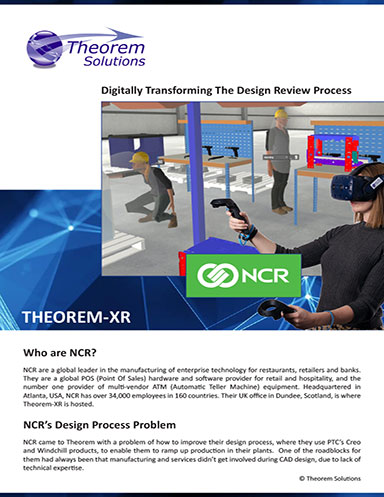Digital Transformation: Predictions for 2022
John McEleney of PTC identifies five key trends that will enable business leaders to embrace business agility as a key driver since agility is the new competitive edge in 2022.
Latest News
February 24, 2022
We are hoping to move past the pandemic in 2022, while embracing some of the positives that resulted from it. We’ve seen accelerated innovation and adoption of new technologies that have empowered engineers to design in real-time and businesses to pivot, fast.
The question to ask now is, what’s next?
Here are some key trends I expect to see in 2022.
1. Digital technologies will transform the physical world. In this fast-paced, hyper-connected era, we’ll see greater use of software platforms to design digital prototypes and fix issues before they become a challenge in the physical world. Digital-first will also impact processes and workflows and how employees and customers interact. In fact, the digital design process will start to incorporate customers into the development design process by getting their feedback and insight while the product is still in development. Overall, the digital process will help engineers to design, engineer and manufacture flawless products, eliminating costly mistakes in the physical world and saving time.
2. Greater adoption of cloud-native tools. Whether employees are working from home, returning to the office or splitting their time between the two, we’ll continue to see more businesses relying on cloud-native technologies to boost real-time collaboration. Also, as companies rethink their offices and workflow, they will demand platforms that will allow engineers to accelerate the innovation process, giving them a competitive edge in today’s innovation economy. Finally, Gen Zs are digital natives. They make up about 40% of the current workplace and will be taking over the workplace and be in leadership positions in the coming years. This generation expects the workplace to leverage digital collaboration software so they can be more productive, irrespective of their location or time zone.
3. Greater emphasis on agility. Given global market uncertainty in an ongoing pandemic era, agility will continue to be an important corporate differentiator. Companies will likely continue to develop annual plans, but they must also be ready to turn on a dime and respond to market needs that may not have existed just a few weeks prior. Companies that embrace business agility as a core operating philosophy will do well and those that can’t pivot fast, will sadly face significant challenges.
4. Additional hybrid environments will emerge. In 2022 and beyond, we’ll be living and working in a hybrid work/remote environment. We could be meeting in person, while collaborating with a geographically distributed team. We may be innovating with a local ecosystem while being connected to the global supply chain. Yes, expect to see an increasing number of hybrid work environments as we enter the new year.
5. Security will become a major issue. Every day that companies continue using installed software and sharing copies of files via email, the task of keeping those systems secure will become a major challenge. The inability to immediately patch traditional installed software makes it vulnerable to security breaches, including ransomware attacks. Last year it is estimated that ransomware attacks alone, across the world cost companies an estimated $20 billion. There is no evidence that this trend is slowing and cybercrime is expected to cost the world $10.5 trillion annually by 2025. This should be another reason why companies should consider cloud platforms vs. traditional workflows and systems.
The one certainty we can expect this year is continued uncertainty – whether it’s a new variant or the economy. As leaders, we have to be prepared and be adept at successfully navigating change. I believe business agility will be the key driver and the new competitive edge in 2022. We must find new ways to be alert and responsive to evolving market conditions, to address employee needs and expectations, while meeting customers’ shifting demands and buying patterns.
Here’s to 2022!

Entrepreneur and industry luminary, John McEleney has spent his career transforming businesses, driving corporate strategy and forecasting what’s next in product development and manufacturing.
With more than 30 years of experience in mechanical design and software, McEleney understands the innovation challenges customers face in today’s hyper-connected world, and helps them navigate the digital era. Co-founder of Onshape, McEleney is currently corporate vice president of strategy at PTC.
More PTC Coverage
Subscribe to our FREE magazine, FREE email newsletters or both!
Latest News







